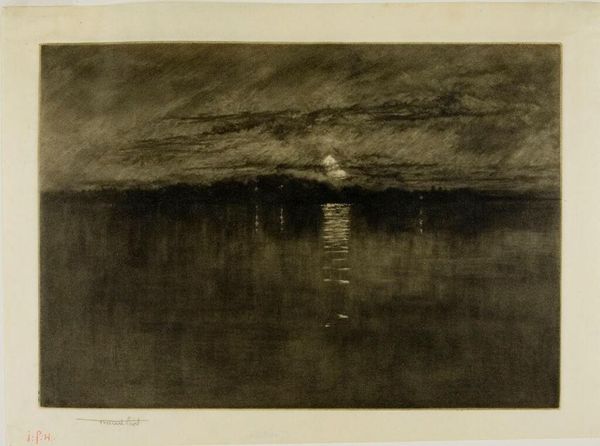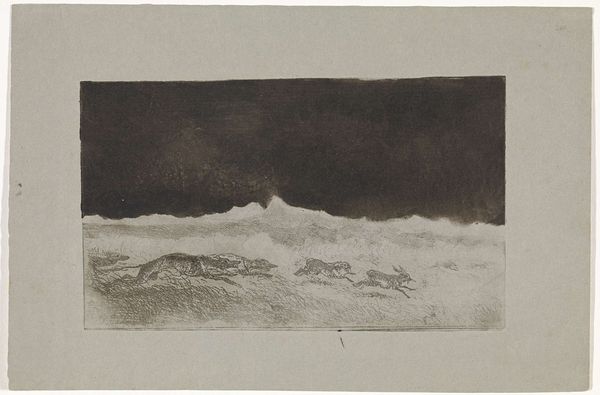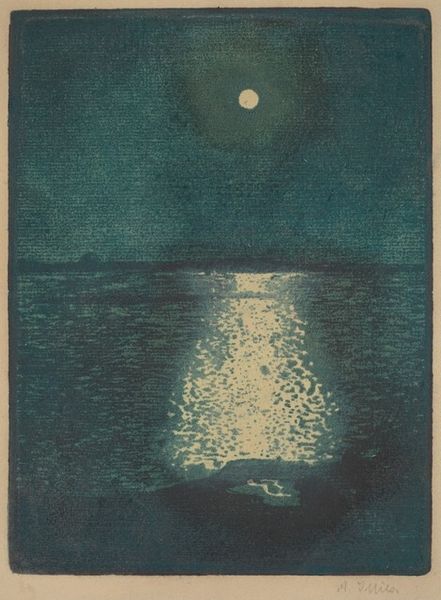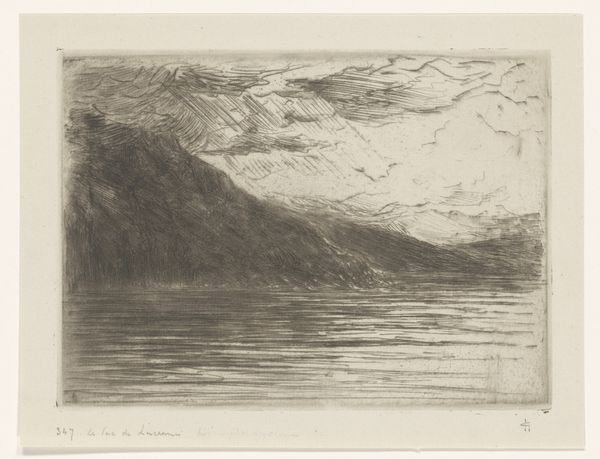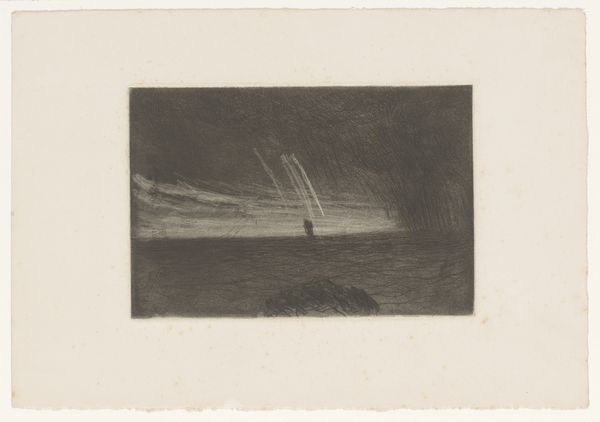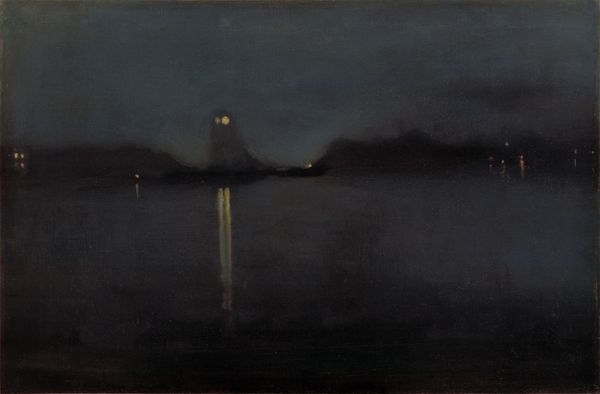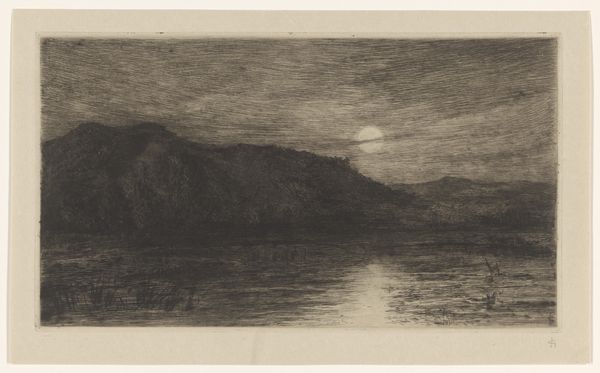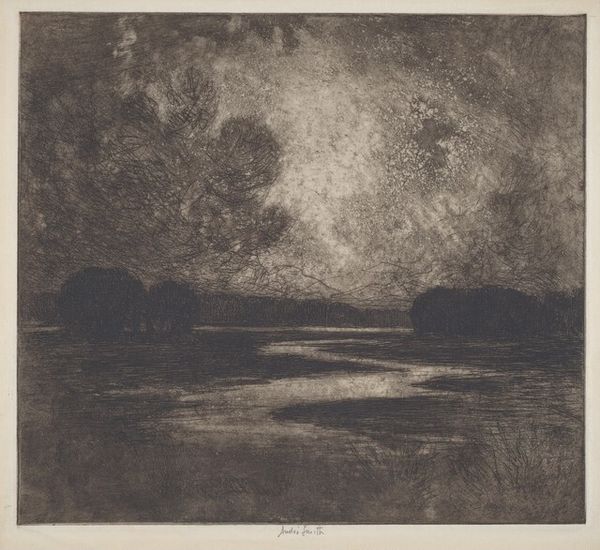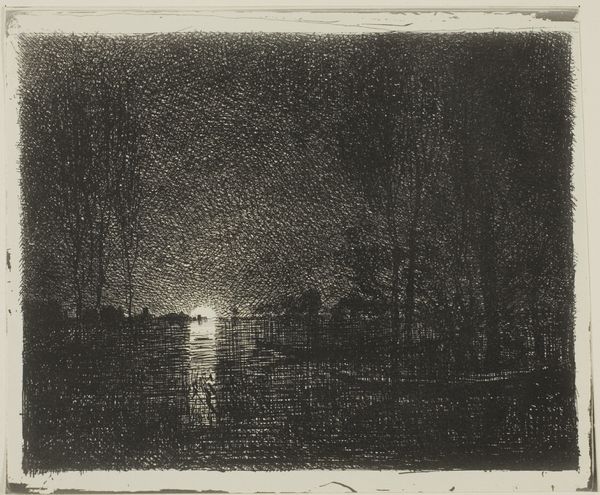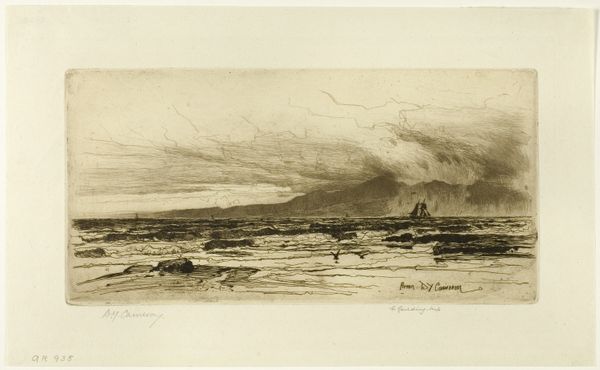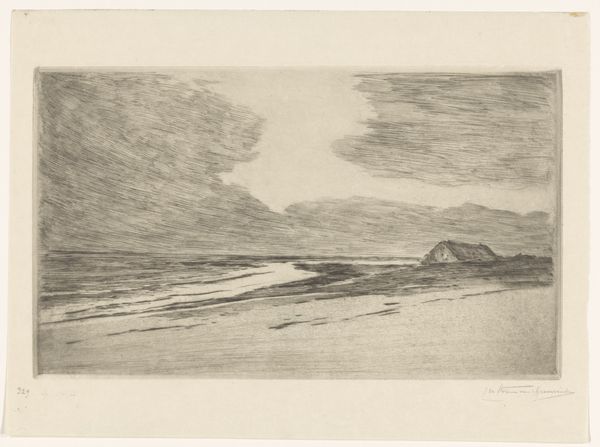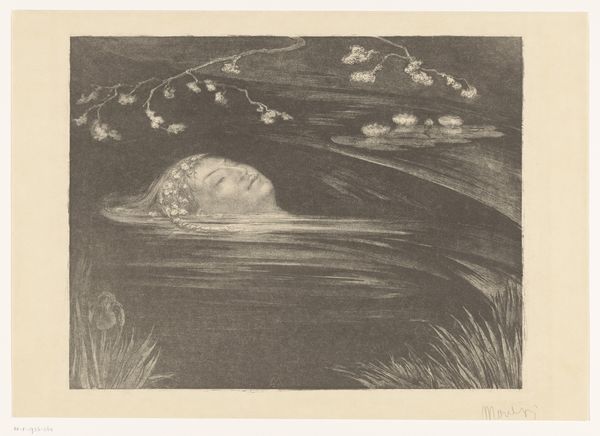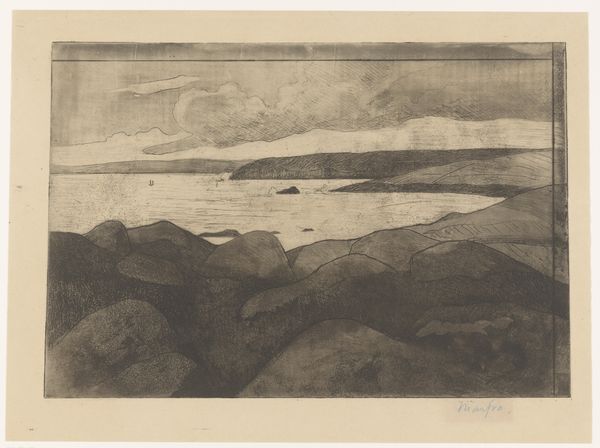
Dimensions: plate: 17.78 × 25.08 cm (7 × 9 7/8 in.)
Copyright: National Gallery of Art: CC0 1.0
Curator: "When the Weary Moon Was In the Wane, Dort," etched in 1894 by Frank Short, showcases a tranquil waterscape in graphite. It evokes the visual style of Romanticism, translated through the medium of printmaking. Editor: Immediately, I’m struck by the moodiness. It's all subtle gradations of gray, creating this overwhelming feeling of quiet solitude. The moon’s reflection shimmering on the water has this eerie feel; it recalls stories of moon goddesses, lost sailors, and forgotten rites. Curator: Yes, the title itself evokes a kind of melancholic poetry that echoes the broader cultural themes in fin-de-siècle England. The 'weary moon' speaks volumes about the late-Victorian disposition; an atmosphere charged with decadence, spiritual questioning, and looming socio-political shifts. Even the setting—Dort, in the Netherlands—offers insights. Holland was a subject and source of inspiration that was commonly pursued by several artists in that time. It signified something “authentic." Editor: I notice the dark water—almost black, reflecting this pillar of shimmering light. Moonlight, as a symbolic visual language, is fascinating; in art, its path across the water often represents a psychological threshold, or a journey between different states of being. Think of the archetypal symbolic quest of sailors using the stars in navigation or Charon steering his boat under a bright full moon! Curator: The emphasis on the effects of light, as explored by Short, aligns strongly with the aesthetic concerns of the Romantic movement, even as it appears so late in its course. Consider the context in relation to the colonial narrative of the British empire. Was Short thinking about how people far across the globe perceived this 'weary moon?' Or what this melancholic feeling means for people suffering exploitation due to British industrial growth? Editor: Perhaps Short considered moonlight as the great equalizer? Shining down on everyone regardless of where they are or who they are. In many mythologies and belief systems, it is believed to evoke different aspects of human consciousness. I see a universality in this image, and its pull towards this deeper subconscious through very simple iconic structures. Curator: Interesting—and crucial for any consideration of how visual languages intersect with lived experiences of political, social, and personal struggles, wherever they unfold. Thanks to our different interpretations, the art piece becomes richer, connecting past and present in new and relevant ways. Editor: Yes, each analysis really enriches the experience. Visual language invites layered approaches and that can only further enlighten one's view.
Comments
No comments
Be the first to comment and join the conversation on the ultimate creative platform.
